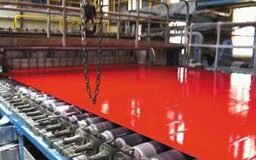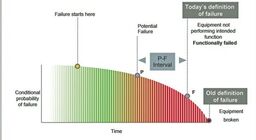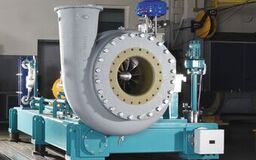Simplifying Moisture Measurement
When manufacturing pulp, paper, and corrugated materials, measuring and controlling moisture content can impact product quality, production throughput, and processing efficiency. It can also affect the purchase price of wood chips, pulp, and converted paper products, not to mention shipping costs.
Until recently, conducting frequent moisture content tests throughout the process or in the field has been difficult. In many cases, the primary barrier has been the expertise and time required to conduct such tests. Often, sophisticated moisture measurement devices must be operated by trained personnel who can properly calibrate the equipment. Many devices also require meticulous sample preparation and disposal.
Fortunately, handheld devices are now available that allow even less-skilled personnel to take lab-quality moisture measurements. These “point-and-measure” options allow moisture readings to be quickly taken at any stage of the process, as well as at loading docks; on trucks; at supplier facilities; or in bins, vats, or vessels.
By simplifying the process, pulp and paper producers and converters can increase the quality of their products from wood chip receipt and pulping to end product conversion and distribution.
FLEXIBLE AND FAST
Although traditional laboratory- and online-based moisture measurement techniques are useful in the right settings, they have lacked the simplicity and flexibility required for frequent spot checks.
One common test is Loss on Drying, which measures the total material weight change after drying. However, such tests typically require a sample to be prepared and brought back to the lab. The test takes at least 15 minutes to several hours to perform, which is too slow when more immediate measurements are required. It also requires the sample to be altered or destroyed.

In response, Kett US has developed a simplified approach that allows even less-trained personnel to take portable, instant moisture reading spot checks of pulp and paper industry inputs, in-process conditions, or finished products as needed. This can be used for measuring wood chips and incoming fiber before the “value-add” of the mill begins. It can include checking pulp sheets before pulp mill processing, analyzing the web for wet streaks and uneven drying before or after dryer cans, inspecting incoming roll stock before conversion, and of course at end product quality checks.
The approach involves moisture meters that use Near-Infrared (NIR) light, a highly accurate, non-contact, secondary measurement method that can deliver immediate, laboratory-quality moisture readings.
NIR moisture meters allow very accurate, instant measurement of solids, pastes, slurries, and liquids without contact or sample preparation, so there is no contamination in handheld and online models. Once the meter has been calibrated against the lab or production standard, the calibration is stored in the device so no calibration is required in the field. Measurements are fully traceable to the original measurement method.
In addition, because the process is non-destructive, samples remain unaltered so they can be used for additional tests or put back into the product stream.
HOW IT WORKS
NIR moisture meters follow the principle that water absorbs certain wavelengths of light. The meter reflects light off the sample, measures how much light has been absorbed, and the result is automatically converted into a moisture content reading.
Unlike complex laboratory equipment, portable NIR equipment is designed for ease of use. For example, with Kett’s KJT130 Handheld Portable Instant Moisture Meter, the user simply points the instrument at the product and the moisture content is instantly shown on a digital display, with results accurate to .01 percent in a 0-100 percent measurement range.
Because no direct contact or sample alteration is required, particle size variation and unusual textures are not an issue. This can be important when used with a range of inputs, processes, or end products in different settings.
For ease of use, the unit is operated via user-friendly menu commands. The size of a camcorder, it is designed for frequent spot checks wherever necessary, on both stationary and moving (process line) products. Moisture measurement data may be stored in the instrument, downloaded continuously, or manually recorded.
The goal is for any staff member to be able to successfully use the moisture meter wherever it is needed, with minimal required training. This allows pulp and paper industry processors and converters to have the certainty that what they are producing is of the highest quality.
The same technology is also available for online/inline systems that allow instant moisture measurement on pulp and paper production lines. Such continuous monitoring can help to eliminate costly batch waste and provide superior data to optimize the process. Instant desktop options are available as well for settings where producers want to remove a sample, test it, and then replace it.
The key is to cost-effectively conduct as much testing as required, with full confidence in the results, each and every time.
John Bogart is the managing director of Kett US, a manufacturer of a full range of moisture and organic composition analyzers. For more information, contact Kett at 800-438-5388, email [email protected], or visit www.kett.com.




